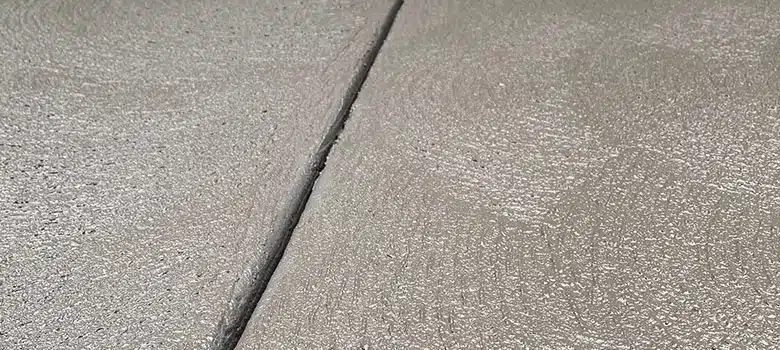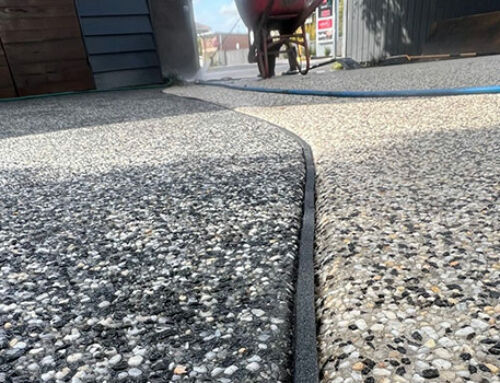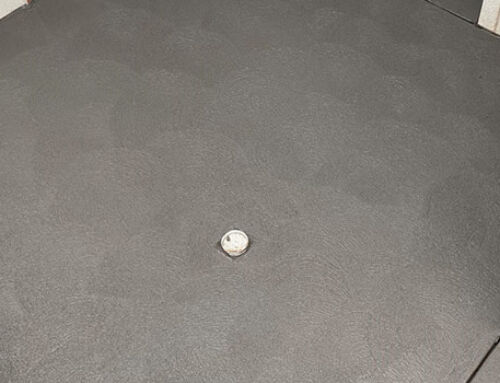Looking for a durable, easy-to-maintain, and beautiful concrete option?
You can’t go wrong with coloured concrete, which can instantly create a sense of sophistication and style to any outdoor space.
That said, before you pull the trigger, it’s important to understand the costs and what kind of pricing to expect. That way, you can clearly understand if coloured concrete fits into your budget.
Here’s everything you should know to get your budget in order, your costs under control, and a vibrant coloured concrete surface that brightens your day.
Is coloured concrete worth it?
Although the answer to this question will always come down to your budget, tastes, and expected usage, coloured concrete can be a long-lasting, aesthetically beautiful, and versatile flooring option for many.
You’ll see coloured concrete in a range of residential and commercial settings, including:
- Around the home (e.g. driveways, patios, and floors)
- Commercial and industrial spaces
- Architectural design elements
- Parking spaces and cycling paths
In short, its application is extremely versatile, and it can be a low-cost, aesthetically pleasing flooring option for countless spaces.
How is colour added to concrete?
There are two versions of coloured concrete: integral and topical.
With integral concrete, the colour is mixed directly into the concrete.
With topical, it is applied as a stain. Within the topical space, there are multiple options, including acid-borne stains, water-borne stains and dyes:
- Acid-borne stains provide permanent color – like integral coloured concrete– using a chemical reaction.
- Water-borne stains provide a colour-filled coating on top of concrete. There is no chemical reaction, and the colour is generally consistent and buildable.
- Dyes are applied directly to a concrete’s surface, followed by a sealer to bond them to the concrete.
Additionally, you can stamp or stencil your concrete for added effect. With stamped concrete, stamps and coloured powder are added to fresh concrete to create a pattern on the surface. This pattern often mimics natural brick or the appearance of a stone driveway.
With stenciled concrete, designs are added to finished, dry concrete to create a chosen pattern. Stenciled concrete is generally much easier to work with, as it can be applied any time and in larger areas than stamped concrete.
Both integral and topical coloured concrete are viable options, and they can be particularly appealing if you’re looking to break up a drab space, replicate nature, or improve your home’s overall aesthetic.
Factors determining coloured concrete costs
Many factors can influence the overall cost of your coloured concrete. It’s important to evaluate which, if any, of these are relevant in your home, as this will impact the final costs.
These factors include things like:
- Size: The size of the site that needs new concrete will determine your overall cost, though the depth of the concrete being poured is also something to be considered.
- Site preparation: The amount of work needed to excavate and level the site can influence your costs. Is it a new build? A repair? An excavate and replacement? Answering these questions makes a big difference on the final price.
- Drainage: Oftentimes, sites need drainage, plumbing, or for the soil to be compacted to guarantee there is a sound foundational structure and that you don’t face structural problems down the line.
- Site access: If there is a large slope, vegetation, or any other barriers to access, it will cost more to clear the obstacles and get to work.
You may also need to factor in the costs of any replacement concrete down the line. Coloured concrete is long-lasting, but it can crack after 5-10 years. In many instances, this can be repaired or resealed at a lower overall cost than complete replacement. Talk to your installer to see what kind of repair or replace options they offer.
How is coloured concrete installed?
There are a few steps involved when it comes to the installation of a new coloured patio or poolside area. The more steps required, the more your potential costs can be affected. Here’s an example of what a coloured concrete job might include:
- Mix and lay concrete
- Cut concrete
- Clean dirty existing concrete
- Reinforce existing concrete
- Lay an entirely new foundation
- Pour concrete into frames or structures
- Grind, polish, and seal concrete
- Create decorative effects
- Create a patio, shed, footpath, or flooring
How much should you expect to pay for coloured concrete?
Though, as we mentioned, the price depends on various factors, you can expect to pay $75 – $90 per m2 for coloured concrete. This number will also depend on the type of dye and colouring that is used. For example, if you add stamps or stencils, the price can be $90 – $140 per m2.
You’ll also need to factor in the cost of installation, or speak to your local concreting experts to find out if their price is inclusive or labour or not. The table below outlines the average labour costs for Melbourne concreters.
Looking to save money? Check out our practical driveway ideas on a budget
How do coloured concrete costs compare to other types of concrete?
| Concrete type | Cost per sq/m |
| Plain concrete | $85 – $135 |
| Reinforced concrete | $65 – $90 |
| Permeable paving | $120 – $170 |
| Coloured concrete | $90 – $140 |
| Exposed aggregate concrete | $100 – $150 |
| Pave Cut | $15-$30 |
Trust Concept Concrete to bring a little colour into your life
If you want to pick a beautiful, long-lasting, low-maintenance flooring option, you can’t go wrong with coloured concrete. Understanding the pricing and important cost factors will help you effectively evaluate your space and keep within your budget.
If you have any more questions about concrete pricing or which elements would impact the costs for your home, feel free to reach out to us directly here or on 1300 366 343.



![Pros and Cons of Coloured Concrete [Melbourne Guide]](https://conceptconcrete.com.au/wp-content/uploads/2023/04/Pros-and-cons-of-coloured-concrete-in-Melbourne-1-500x383.jpg)
![How to Choose the Best Coloured Concrete Contractor in Melbourne [Tips and Advice]](https://conceptconcrete.com.au/wp-content/uploads/2023/04/How-to-choose-the-best-coloured-concrete-contractor-in-Melbourne-500x383.jpg)

![How To Colour Concrete [Five Different Methods Explained]](https://conceptconcrete.com.au/wp-content/uploads/2022/02/How-To-Colour-Concrete-500x383.jpg)